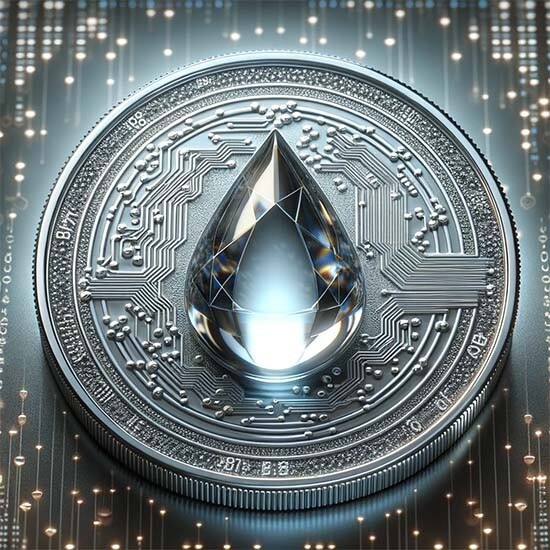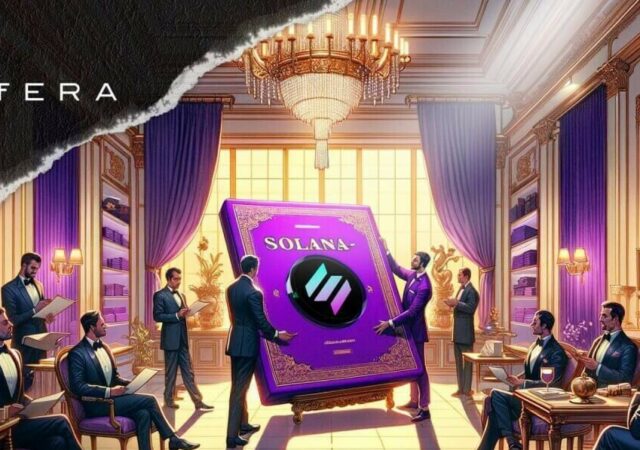- Inscriptions have transformed the blockchain landscape, allowing for permanent recording of data and unique identification of digital assets.
- The integration of inscriptions into the Ethereum Virtual Machine has optimized data storage and management, improving the capabilities of the Ethereum network.
- Sui’s object-based architecture has revolutionized blockchain performance, adeptly managing a surge in inscription-related transactions and setting new benchmarks in the field.
The transformative impact of inscriptions in blockchain technology and the standout performance of the Sui network in 2023 represent a significant milestone in the digital ledger landscape. Originating in Bitcoin, inscriptions offered a new way to record data onchain, a concept later adapted to Ethereum’s Virtual Machine, revolutionizing data management. This exploration showcases how Sui’s unique object-based architecture has redefined blockchain performance, adeptly managing a surge in inscription-related transactions and setting new benchmarks in the field. The piece underscores Sui’s innovative contributions and their far-reaching implications for blockchain’s future.
Unveiling the Revolution: Inscriptions in Blockchain
Transforming Bitcoin: The Advent of Inscriptions
The blockchain landscape underwent a significant transformation with the advent of inscriptions, a concept originally utilized in Bitcoin. These inscriptions have unlocked a new dimension of utility for the Bitcoin blockchain, traditionally devoid of smart contracts. They enable the permanent recording of arbitrary data within the blockchain’s infrastructure. This innovation has been particularly impactful in the realm of Non-Fungible Tokens (NFTs), allowing for the unique identification and verification of digital assets on the Bitcoin blockchain, a feature previously unattainable in its ecosystem.
Expanding to Ethereum: Inscriptions Meet EVM
The Ethereum Virtual Machine (EVM) embraced inscriptions, integrating this innovative concept into its more complex architecture. Developers harnessed the flexibility of the EVM’s transaction calldata fields to store inscription data. This integration not only broadened the utility of inscriptions but also optimized the efficiency of data storage and management on Ethereum. It marked a pivotal moment in blockchain technology, enhancing the Ethereum network’s capabilities in handling NFTs and token metadata.
The Implications of Inscriptions on Smart Contract Platforms
Enhancing Efficiency: Lower Costs, Higher Performance
Inscriptions have emerged as a highly efficient method for managing token balances and NFT metadata onchain. Their integration into various blockchain platforms has significantly reduced gas requirements compared to traditional smart contract transactions. This efficiency has become a cornerstone in the evolving landscape of blockchain technology, offering users a cost-effective and streamlined method to interact with digital assets.
The Challenge: Reliance on Offchain Indexers
Despite their benefits, inscriptions are not without challenges. The reliance on offchain indexers to manage these transactions introduces a layer of complexity and potential vulnerability. This dependence highlights a critical area in blockchain technology that requires continuous innovation and development to ensure robust, secure, and transparent operations.
Sui: A New Era in Blockchain Performance
Sui’s Distinct Approach: Leveraging Objects for Flexibility
Sui’s blockchain architecture marks a paradigm shift in the treatment of data and transactions. Unlike traditional platforms, Sui utilizes objects as its fundamental storage units, providing unparalleled flexibility in data management. This unique approach facilitates the seamless integration of inscriptions, further enhancing Sui’s capabilities in handling diverse and complex blockchain applications.
Breakthrough Performance: Handling Inscription Surge with Ease
In the face of a surge in inscription-driven activities, Sui demonstrated extraordinary resilience and efficiency. Processing over 13.8 million transaction blocks in a single day without a spike in gas fees or Change some thingsslowdowns, Sui established itself as a frontrunner in blockchain technology. This performance is a testament to Sui’s advanced infrastructure and its ability to handle high transaction volumes while maintaining network stability and low costs.
Sui: Pioneering the Future of Blockchain
Architectural Excellence: Built for Adaptability and Innovation
Sui’s architecture is designed for the future, providing a robust and flexible platform for blockchain development. Its inherent adaptability and support for diverse applications position it as an ideal environment for the continuous evolution of blockchain technology. The network’s capacity to integrate new concepts like inscriptions while maintaining low gas fees and high throughput exemplifies its readiness to meet the ever-changing demands of the blockchain industry.
Empowering Developers: The Potential of Move and Sui
The combination of Sui’s innovative architecture and the Move programming language opens up a realm of possibilities for developers. This synergy empowers them to create sophisticated and efficient blockchain applications, pushing the boundaries of what is achievable in this dynamic field. As more developers harness the power of Sui and Move, the blockchain industry is poised for unprecedented growth and innovation.
Conclusion
In conclusion, the emergence of inscriptions and the breakthrough performance of Sui in 2023 signify a pivotal moment in blockchain technology. These developments not only enhance the efficiency and capabilities of blockchain networks but also pave the way for new innovations and applications. As the industry continues to evolve, platforms like Sui will play a crucial role in shaping the future of blockchain technology, offering a versatile and powerful environment for developers and users alike.





